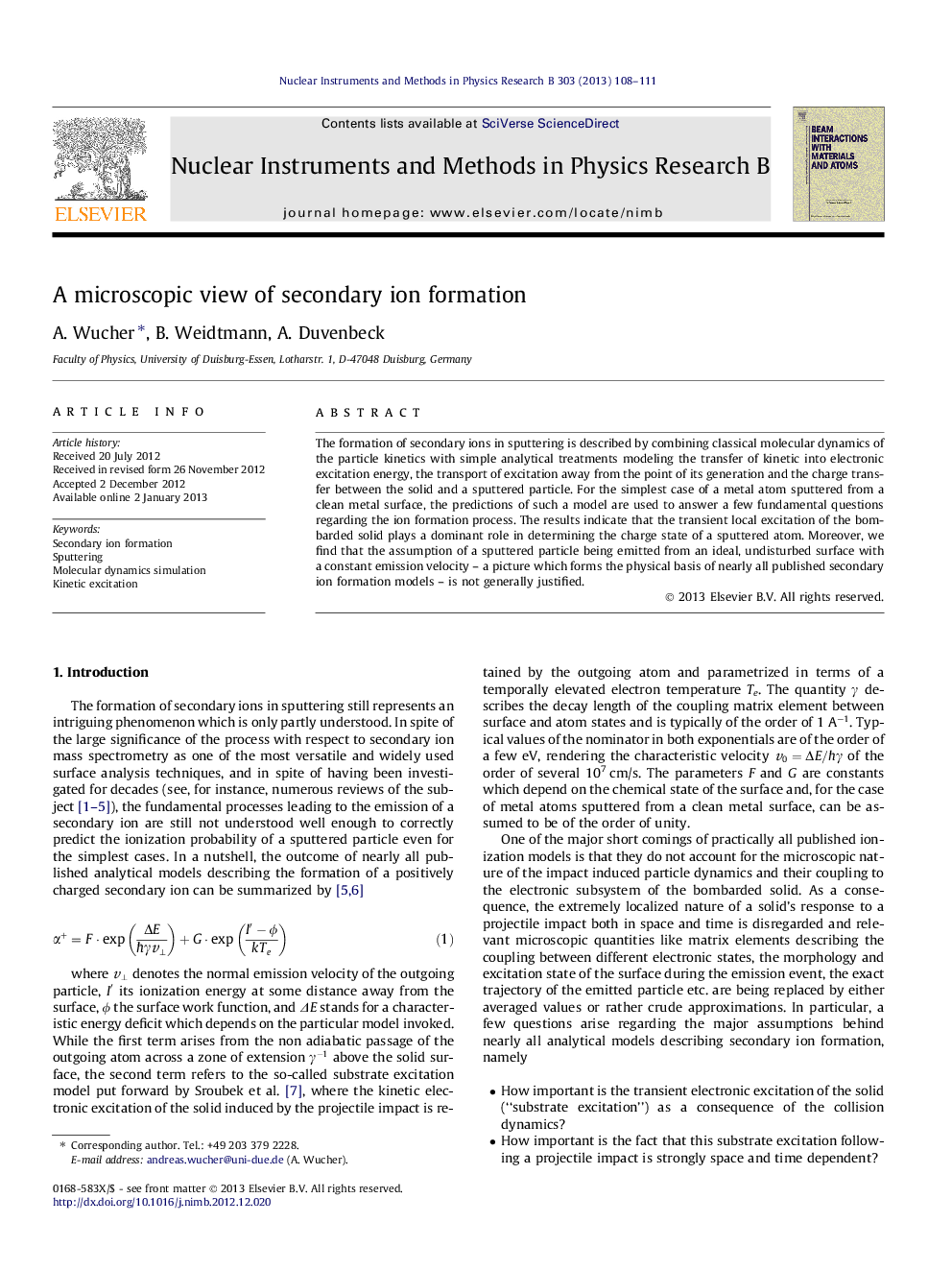| Article ID | Journal | Published Year | Pages | File Type |
|---|---|---|---|---|
| 8042844 | Nuclear Instruments and Methods in Physics Research Section B: Beam Interactions with Materials and Atoms | 2013 | 4 Pages |
Abstract
The formation of secondary ions in sputtering is described by combining classical molecular dynamics of the particle kinetics with simple analytical treatments modeling the transfer of kinetic into electronic excitation energy, the transport of excitation away from the point of its generation and the charge transfer between the solid and a sputtered particle. For the simplest case of a metal atom sputtered from a clean metal surface, the predictions of such a model are used to answer a few fundamental questions regarding the ion formation process. The results indicate that the transient local excitation of the bombarded solid plays a dominant role in determining the charge state of a sputtered atom. Moreover, we find that the assumption of a sputtered particle being emitted from an ideal, undisturbed surface with a constant emission velocity - a picture which forms the physical basis of nearly all published secondary ion formation models - is not generally justified.
Related Topics
Physical Sciences and Engineering
Materials Science
Surfaces, Coatings and Films
Authors
A. Wucher, B. Weidtmann, A. Duvenbeck,
